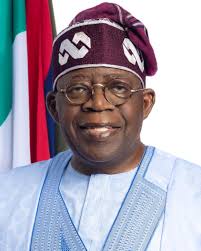ABUJA, Nigeria – In a vote of confidence for President Bola Tinubu’s economic overhaul, S&P Global Ratings upgraded Nigeria’s sovereign credit outlook to “positive” from “stable” on Friday, November 14, 2025, while affirming the long-term foreign and local currency ratings at “B-/B.” 0 1 2 3 4
The revision signals S&P’s expectation that Nigeria’s aggressive monetary, fiscal, and structural reforms—launched in 2023—will deliver sustained benefits, including higher growth and improved fiscal buffers over the medium term. 0 1 “The monetary, economic, and fiscal reforms being implemented by Nigerian authorities will yield positive benefits over the medium term,” the agency stated in its report, citing strengthened external reserves, rising oil production, and private sector confidence as key drivers. 0 3
S&P now forecasts average GDP growth of 3.7% annually from 2025–2028, up from its prior 3.2% estimate, bolstered by the Dangote Refinery’s full operations and gradual inflation moderation. 1 Inflation, however, is projected to linger above 20% in 2025–2026 before easing to 13% by 2028, amid persistent pressures from food costs and naira volatility. 7
A String of Positive Signals from Global Raters
The S&P move caps a series of encouraging assessments for Africa’s largest economy, which has grappled with decades of fiscal strain and oil dependence. In May 2025, Moody’s upgraded Nigeria’s rating one notch to “B3” from “Caa1,” praising enhancements in external buffers and fiscal discipline. 0 7 Fitch Ratings, in October 2025, maintained its “B” rating with a “stable” outlook, acknowledging reform progress despite implementation risks. 0
These upgrades reflect Tinubu’s bold 2023 playbook: the abrupt end to the $10 billion annual fuel subsidy, unification of the naira’s multiple exchange rates, and tax reforms aimed at broadening revenue beyond oil. 0 The measures, though sparking short-term pain—inflation hit 34.2% in mid-2024—have drawn $30 billion in foreign investment since inception, per Central Bank data, and stabilized reserves at $38 billion by October 2025. 3 6
Fiscal Lifelines and Lingering Shadows
To plug a 2025 budget deficit projected at 3.9% of GDP, Nigeria tapped international debt markets last week, raising $2.35 billion via a landmark Eurobond—its first since 2022—yielding 9.25% on a 10-year tranche amid strong investor demand. 0 2 6 Domestic borrowing continues through FGN bonds, with the Debt Management Office targeting ₦7.3 trillion ($4.3 billion) for the year.
Analysts, however, caution that execution remains the Achilles’ heel. “If sustained, these reforms could support long-term economic expansion,” S&P noted, but flagged risks from oil price swings—crude Brent hovered at $72 per barrel Friday—and geopolitical tensions in the Sahel. 0 5 CFG Advisory’s Tilewa Adebajo highlighted fiscal reporting gaps, with 2023–2024 accounts still pending, potentially complicating further upgrades. 6
On social media, reactions ranged from optimism—”Reforms paying off!”—to pragmatism: “Positive outlook, but naira needs to stabilize below ₦1,500/$.” 7 The naira traded at ₦1,620/$ in the investor window Friday, down 2% week-on-week.
A Glimmer for Investors?
This outlook shift could ease Nigeria’s borrowing costs, currently among Africa’s highest at 9–10% for sovereign debt, and lure more FDI into sectors like renewables and tech. Yet, with elections looming in 2027 and insecurity curbing non-oil growth, Tinubu’s team must navigate a tightrope. As S&P put it: Reforms are “on track,” but the jury on delivery is out.
For now, in a global landscape of rising U.S. rates and sluggish China demand, Nigeria’s positive pivot offers a rare bright spot for emerging markets.

